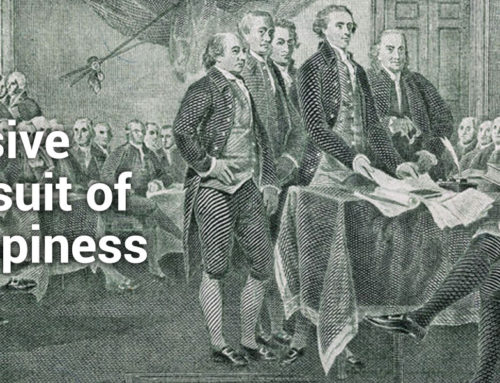In my previous blog on the Performance Trilogy®, (here) the secret to achieving superior performance at any endeavor was to focus your energy on three fundamental processes; strategy, execution and leadership development. Leading each of the three processes requires that you assume different roles and responsibilities. During the upfront strategy phase, your role is to “lead from the front” and create and promote a compelling vision and strategy that inspires your team. This is the most traditional view of the leadership role. When transitioning to the execution phase, your role is to “lead from the middle” and execute the strategy to produce results. This is the traditional view of the management role. In the leadership development phase, your role is to “lead from the rear” and empowering your team, guiding them and helping them grow as leaders. This is the traditional view of coaching.
Ultimately, asking whether someone is a leader, or a manager is the wrong question. Successful leadership that results in superior and sustainable performance requires all three roles; leading, managing and coaching during each of the three phases of every endeavor. So, a more complete definition of leadership would be:
Leadership = Leading the strategy + Managing the execution + Coaching the development of the team
The Strategy Process requires Inspirational Leadership
Every successful endeavor can be traced back to a winning strategy. It’s the blueprint for high performance. During the initial strategy phase, the key role of the leader is to lead from the front by developing a winning strategy and getting buy-in from those who need to execute it. It is the responsibility of the leader to direct his or her team in executing the key fundamentals. The first fundamental in creating the strategy is selecting a compelling destination; a vision of what it looks like that is highly desirable and achievable with clear benefits for those who are willing to buy-in. The second fundamental is to determine a realistic path to getting to the desired destination. Even with a compelling vision, developing the confidence of a highly skeptical science and technology community will require a solid plan with sufficient evidence justifying the strategy.
The third fundamental is communicating the vision widely throughout the organization. This is an extremely underestimated step. I have asked hundreds of technical staff at all levels to describe the vision and strategy of the organizational they work for and invariably get vague and incoherent answers. Suffice it to say that it is almost impossible to over communicate an organization’s strategy. The fourth fundamental is to generate enthusiasm for the strategy. This may be the most difficult task of all. It is important to identify and promote the specific benefits that will accrue to staff when the strategy is successful. People do things for their reasons not managements.
The Execution Process requires Disciplined Management
During the execution phase, the key role of the manager is to lead from the middle by ensuring that the strategy is rigorously executed. The key responsibility is to translate the key elements of the strategy (i.e. strategic thrusts) into performance objectives that are actively managed throughout the organization. This translation is not straightforward. The first fundamental is to make sure that the organization’s performance objectives are selected based solely on their ability to achieve the success of the strategic thrusts, not the individual apsirations of the management team.
The second fundamental is to cascade the organization’s performance goals to every level of the organization without distortion. Everyone has experienced how easy it is when passing on information to wind up with a totally different message by the time the information gets back to you. The goal should be that every member of the organization should know how the work he or she is performing contributes to the strategic thrusts of the organization.
The third fundamental is to select the most talented and motivated staff to execute the strategy. While this has been conventional wisdom for decades, this fundamental is consistently ignored in many organizations. The manager’s role is to set high standards starting with himself. The selection process is a particularly difficult one requiring that you get to know the candidate’s talents and aspirations in great detail and place them in positions where they can succeed. I have been told the biggest secret to Jack Welch’s success was his nose for talent. Nothing hurts an organization more than placing the wrong person in a leadership or management position.
The fourth fundamental is to monitor performance regularly. Talented and motivated staff appreciate a manager who actively manages by taking an interest in their accomplishments, providing appropriate resources and helps overcome organizational barriers preventing them from accomplishing their organizational objectives. Talent management requires frequent reviews of performance. When it comes to operational objectives to meet current client commitments and quality outputs, I recommend monthly meetings of your team at a minimum as well as individual discussions with staff. For strategic objectives involving longer term growth and diversification, quarterly meeting should be held so that incremental progress can be made on important but not urgent initiatives.
Frequent meetings help with developing an accurate evaluation of staff performance rather than waiting until the end of the year. If done with positive intent, staff will appreciate the effort. Remember when managers stop paying attention, staff stop caring.
The fifth and final fundamental is rewarding performance (both positively and negatively) accurately and fairly. This requires once again that you spend considerable time monitoring staff performance to be sure that you truly understand how well staff achieved their objectives (or not), additional effort spent on contributing to the team’s objectives, and special circumstances unique to individuals. There is nothing that can improve morale more than an honest and accurate performance measurement system.
These are the fundamental tasks and responsibilities when you assume the role of manager. Managers achieve organizational results.
The Leadership Development Process requires Empathetic Coaching
During the development phase, the role of the coach is to help identify and develop the talent and strengths of staff to better execute the organization’s strategy. Unlike the manager’s role which focuses on what the employee can do for the organization; the coaches role focuses on what the organization can do for the employee. For too long this role has been given just lip service. 90% of performance plans focus on the employee’s responsibility to the organization and 10% on the organization’s responsibility to the organization. Enlightened organizations adjust these responsibilities to 50% each, recognizing that investment in
employees improve the employees’ contribution to the success of the organization.
The first fundamental is evaluating the talent and aspirations of the staff and aligning it with the goals of the organization. The secret of employee engagement and enthusiasm is the level of alignment of personal aspirations and organizational goals. As coach, your focus is on the needs of the employee. What is their current level of talent and experience? Is their talent and skill appropriate for the organizational assignment (challenging but not over their heads)? Are there limitations in their self- awareness that would affect their ability to grow? What is their potential for growth and is it matched by their ambition? The answers to these questions are not easy to obtain but hold the secret to successful decisions about alignment and employee satisfaction.
The second fundamental is helping staff to develop a robust career plan based on their aspirations and aligned with the organizations objectives. If there is not at least a 70% alignment with an employee’s career goals and the organization’s goals, the career plan may involve a position or job change that provides for better alignment. If the employee’s aspirations are aligned with the organization’s then development objectives can be created to help staff reach their career goal. As mentioned in the management role above, 50% of the planning process should be spent on organizational performance goals and 50% on individual development goals, making sure that there is at least 70% alignment. By following this process, you will show equal concern for the needs of the organization and the individual and build trust.
The third fundamental is to observe the progress made on development goals and provide feedback. Note the subtle difference between the manager’s responsibility and the coach’s responsibility. The manager’s responsibility is to monitor and evaluate performance on behalf of the organization and reward accordingly. The coach’s responsibility is to observe progress on development goals, both professional and behavioral, of the individual and provide non-judgmental feedback on behalf of the employee.
These are the fundamental tasks and responsibilities when you assume the role of coach. Coaches achieve personal growth in staff.
The secret of successful and sustainable leadership is to understand the three roles and responsibilities in implementing the processes of the Performance Trilogy®, and to know which hat to wear depending on the situation.
I am committed to improving the quality of leadership in science and technology (S&T).
My mission is to pass on the many leadership lessons learned from my experience to the next generation of scientists and engineers to enable them to create business and societal value from science and technology. By leading these three fundamental processes; what I call the Performance Trilogy®, you can avoid the myriad of distractions that interfere with you and your team’s ability to focus on the few critical factors that ensure success.



